Cool Roofs Expert Guide :
A cool roof is one that has been designed to reflect more sunlight and absorb less heat than a standard roof. Cool roofs can be made of a highly reflective type of paint, a sheet covering, or highly reflective tiles or shingles. Nearly any type of building can benefit from a cool roof, but consider the climate and other factors before deciding to install one.
Just as wearing light-coloured clothing can help keep you cool on a sunny day, cool roofs material is designed to reflect more sunlight and absorb less heat than a standard roof. Cool roofs can be made of a highly reflective type of paint, a sheet covering, or highly reflective tiles or shingles. Standard or dark roofs can reach temperatures of 150°F or more in the summer sun. A cool roof under the same conditions could stay more than 50°F cooler and save energy and money by using less air conditioning.
Benefits of Cool Roofs :
A cool roof can benefit a building and its occupants by:
- Reducing energy bills by decreasing air conditioning needs
- Improving indoor comfort for spaces that are not air conditioned, such as garages or covered patios
- Decreasing roof temperature, which may extend roof service life.
Beyond the building itself, cool roofs can also benefit the environment, especially when many buildings in a community have them. Cool roofs can:
- Reduce local air temperatures (sometimes referred to as the urban heat island effect)
- Lower peak electricity demand, which can help prevent power outages
- Reduce power plant emissions, including carbon dioxide, sulfur dioxide, nitrous oxides, and mercury, by reducing cooling energy use in buildings.
Types of Roofs and How They Can Be Made Cool :
There are many types of roof systems available, but the surface exposed to the sun is the one that determines if a roof is cool or not. You can usually make a new or existing roof cool by selecting the appropriate surface.
Cool roof coatings are white or special reflective pigments that reflect sunlight. Coatings are like very thick paints that can protect the roof surface from ultra-violet (UV) light and chemical damage, and some offer water protection and restorative features. Products are available for most roof types.
Low Sloped Roofs
Single-ply membranes are pre-fabricated sheets rolled onto the roof and attached with mechanical fasteners, adhered with chemical adhesives, or held in place with ballast (gravel, stones, or pavers).
How they can be made cool: Reformulate or coat black membranes to make them reflective.
Built-up roofs consist of a base sheet, fabric reinforcement layers, and (usually) a dark protective surface layer.
How they can be made cool: The surface layer can be made in different ways, and each has cool options:
- Substitute reflective marble chips or grey slag for dark gravel in a flood coat of asphalt
- Use reflective mineral granules or a factory-applied coating rather than a dark coating on a mineral surfaced sheet
- Apply a cool coating directly on top of a dark asphaltic emulsion coating.
Modified bitumen sheet membranes have one or more layers of plastic or rubber material with reinforcing fabrics and are surfaced with mineral granules or a smooth finish. These can also be used to surface a built-up roof—known as a “hybrid” roof.
How they can be made cool: Pre-coat with a cool roof coating at the factory.
Spray polyurethane foam roofs are constructed by mixing two liquid chemicals together that react and expand to form one solid piece that adheres to the roof. Foams are highly susceptible to mechanical, moisture, and UV damage, and rely on a protective coating.
How they can be made cool: The protective coatings are usually already reflective and offer cool roof performance.
Steep Sloped Roofs
Shingle roofs consist of overlapping panels made from a variety of materials such as fibreglass asphalt, wood, polymers, or metals.
How they can be made cool: Buy cool asphalt shingles, which use specially coated granules that provide better solar reflectance. (Coating existing asphalt shingles to make them cool, however, is not normally recommended or approved by shingle manufacturers.) Other roof shingles can be coated at the factory or in the field to make them more reflective.
Tile roofs can be made of clay, slate, or concrete. Tiles can be glazed to provide waterproofing or coated to provide customized colours and surface properties.
How they can be made cool: Some are naturally reflective enough to achieve cool roof standards, and surface treatments can transform tiles with low solar reflectance into cool roof tiles.



Dear Roof Restorations Gold Coast,
Wonderful work on our roof restoration and gutters. David will be very happy when he see it.
Kind Regards,
Julie Callea.
Hello Jule,
Thanks for the roof restoration job. Contact us anytime.
Best Regards,
John.
Roof Restorations Gold Coast.